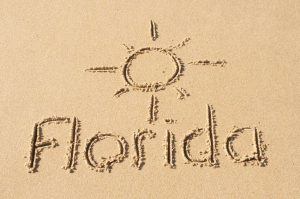
Most period costs are considered periodic fixed expenses, although in some instances, they can be semi-variable expenses. For example, you receive a utility bill each month that is not directly tied to production levels, but the amount can vary from month to month, making it a semi-variable expense. Salary can be both a product cost and a period cost depending on the activities of the worker. examples of period costs Salary paid for the production floor manager is classified as a product cost since the cost is incurred for actual production of the product. Salary paid to an executive is a period cost, since the executive does not work directly on product production. When you differentiate period costs from others, you’re breaking down your expenses to provide insights about where your money is going.

These items are directly traceable or assignable to the product being manufactured. Product costs only become an expense when they are sold and become period costss. Period costss are all the costs that are expired non product costs. They are all the expenses/costs listed in a firm's income statement. The product costs are sometime named as inventoriable costs because they are initially assigned to inventory and expensed only when the inventory is sold and revenue flows into the business.
What is the approximate value of your cash savings and other investments?
Both product costs and period costs directly affect your balance sheet and income statement, but they are handled in different ways. Product costs are always considered variable costs, as they rise and fall according to production levels. Period costs are basically the expenses which could be charged to income statement of the company for the period in which such expenses have been incurred. These expenses are not directly related to the production of inventory and thus does not form part of the cost of goods sold and are charged in the income statement of the company. These costs does not constitute to production of inventory and hence these costs can never be capitalized and always form part of the income statement of the company.
- Firms account for some labor costs (for example, wages of materials handlers, custodial workers, and supervisors) as indirect labor because the expense of tracing these costs to products would be too great.
- Any of these types of companies may just use the term overhead rather than specifying it as manufacturing overhead, service overhead, or construction overhead.
- Some people confuse overhead with selling and administrative costs.
- Cost of goods sold refers to the cost of production of goods, so it is a period cost.
- They are the costs that are directly and indirectly related to producing an item.
- Regardless, all period costs, whether fixed or semi-variable, are considered expenses and will be reported on your income statement.
- These items are directly traceable or assignable to the product being manufactured.
In a manufacturing organization, an important distinction exists between product costs and period costs. These costs are identified as being either direct materials, direct labor, or factory overheads, and they are traceable or assignable to products. In a manufacturing organization, an important difference exists between product costs and period costs.
Examples of Period Costs
Shaun Conrad is a Certified Public Accountant and CPA exam expert with a passion for teaching. After almost a decade of experience in public accounting, he created MyAccountingCourse.com to help people learn accounting & finance, pass the CPA exam, and start their career. The material provided on the Incorporated.Zone's website is for general information purposes only. It is not intended to provide legal advice or opinions of any kind. The Ascent is a Motley Fool service that rates and reviews essential products for your everyday money matters.
Whenever a period of time is presented, there has to be a start date and an end date. This means that accountants now have to make sure that expenses are recorded in the right time period. Costs are classified as period costs if they are non-manufacturing costs incurred during the period.
What is the benefit of classifying costs as products or periods?
Period costs include any costs not related to the manufacture or acquisition of your product. Sales commissions, administrative costs, advertising and rent of office space are all period costs. These costs are not included as part of the cost of either purchased or manufactured goods, but are recorded as expenses on the income statement in the period they are incurred. Remember, when expenses incurred may not be when cash changes hands. If advertising happens in June, you will receive an invoice, and record the expense in June, even if you have terms that allow you to actually pay the expense in July. The cash may actually be spent on an item that will be incurred later, like insurance.
Housing Prices and Inflation CEA - The White House
Housing Prices and Inflation CEA.
Posted: Thu, 09 Sep 2021 07:00:00 GMT [source]
Since product costs are linked to a product, a company can report such costs in the category of cost of goods sold on the income statement. For example, the fee for a consulting service offered by external management consultants is a period cost, but it is not mentioned in any of the categories above. It is a period cost since it is not directly included in the manufacturing process of inventory, and it does not fit in any of the listed titles. The preceding list of period costs should make it clear that most of the administrative costs of a business can be considered period costs. To rapidly determine whether a cost is a period cost or a product cost, ask yourself, “Is the expense directly or indirectly tied to the manufacturing of products?
You must cCreate an account to continue watching
If the accounting period were instead a year, the period cost would encompass 12 months. Make a note of how much money you spend on period costs and expense them during the period in which the costs are incurred. Receipts, employee pay stubs, invoices, and other papers that show how much money you pay out for various period costs may be kept. Thus, on 1st January 2019, it decided to purchase new machinery costing $ 90 million through a loan carrying an interest rate of 8%.